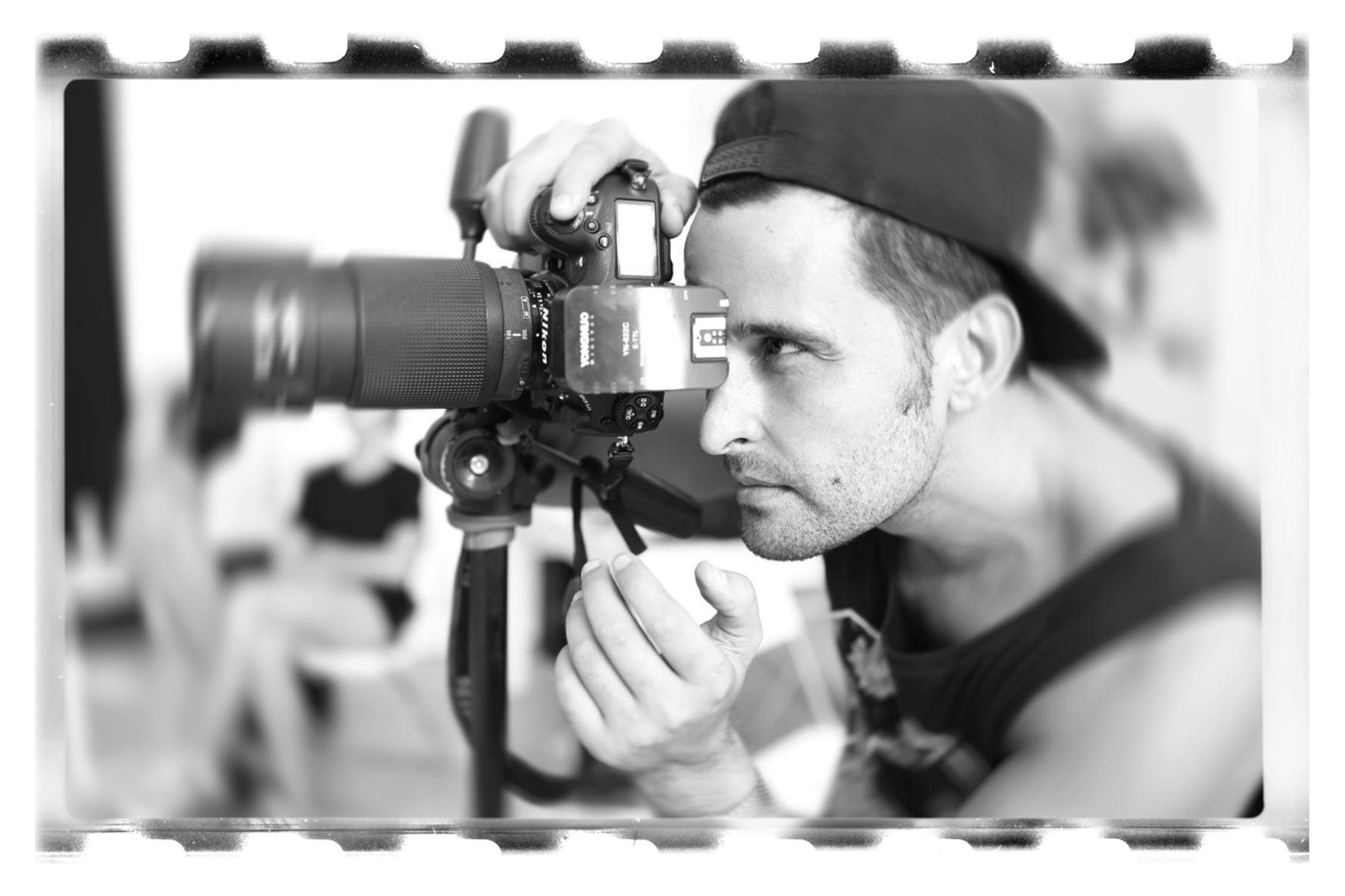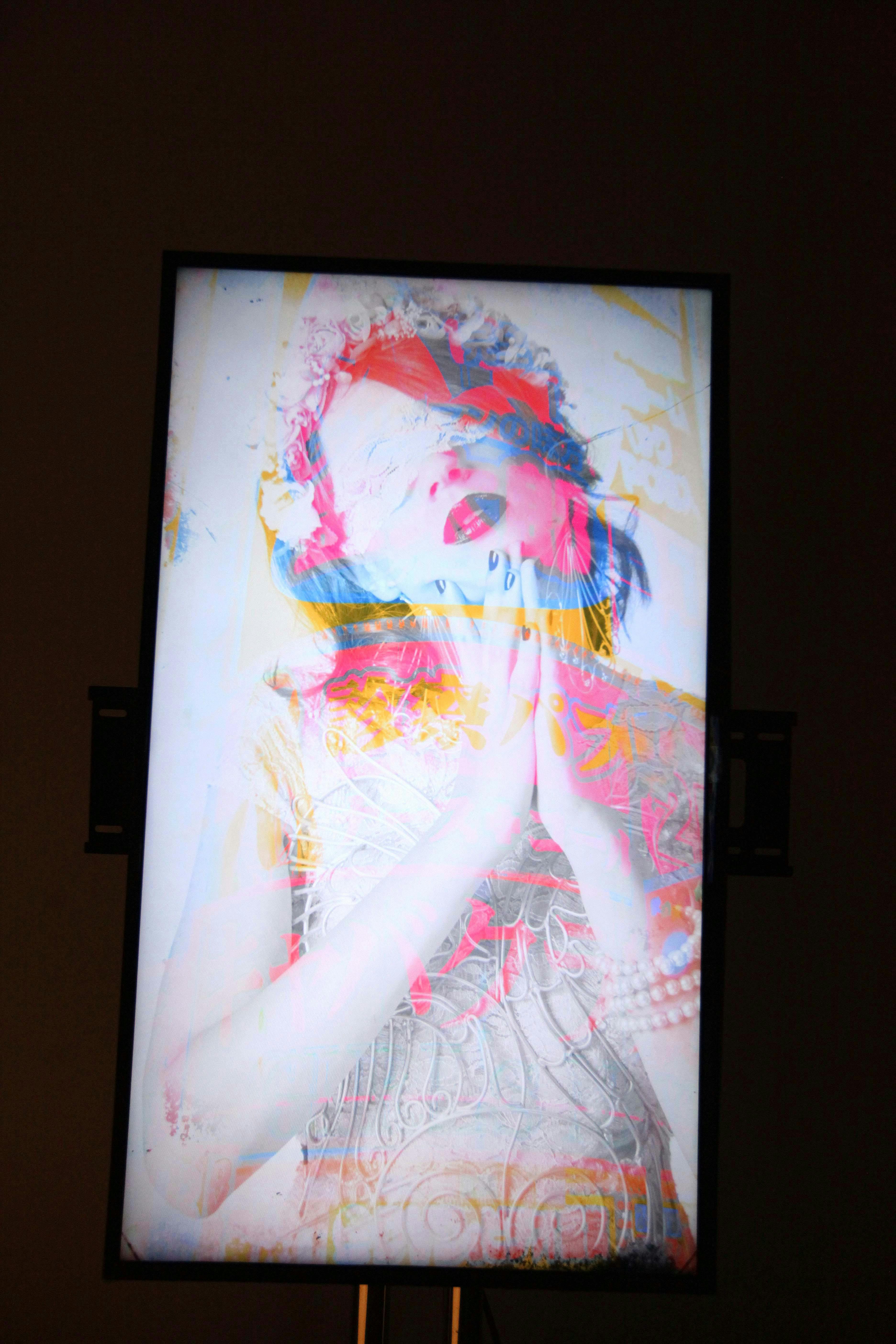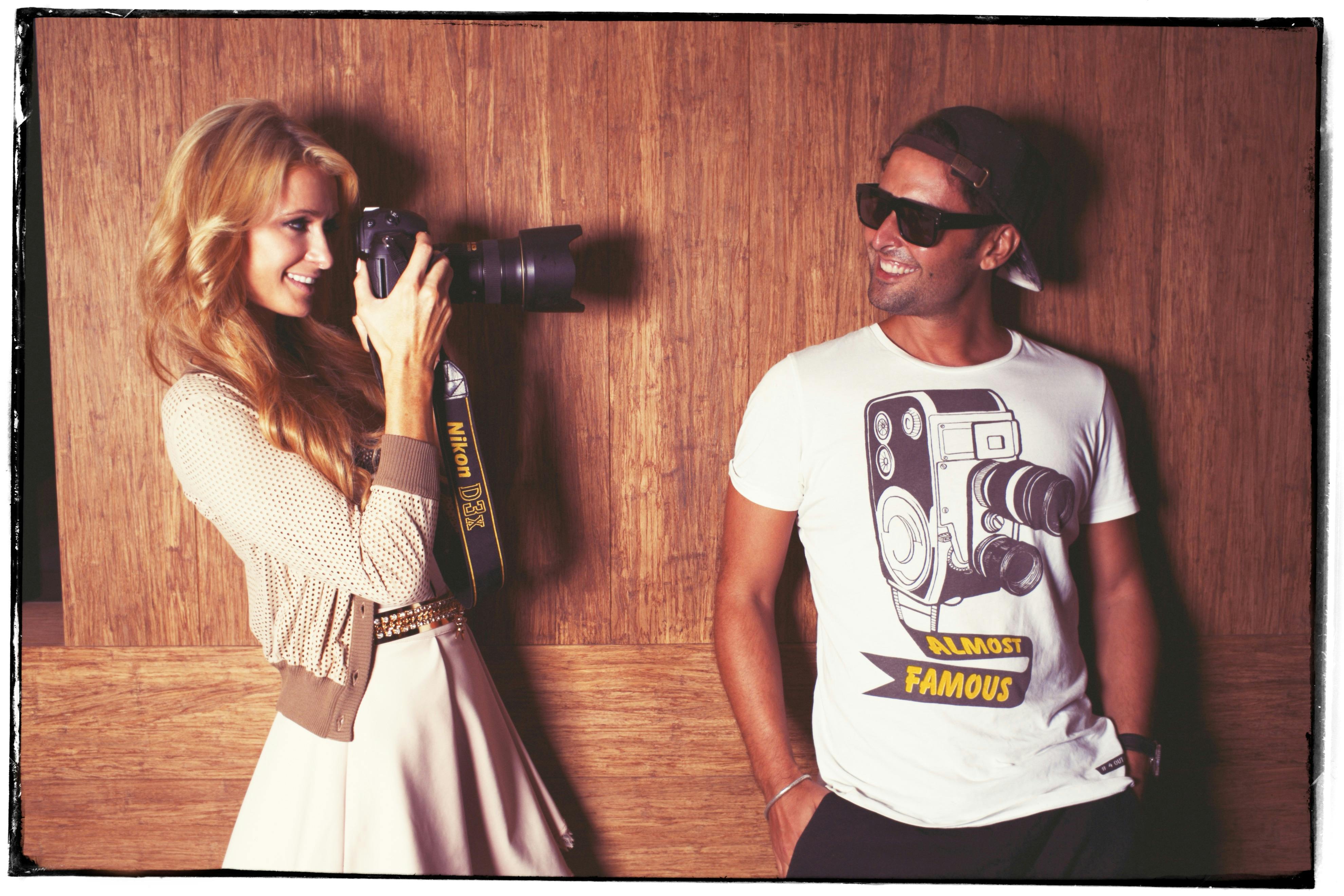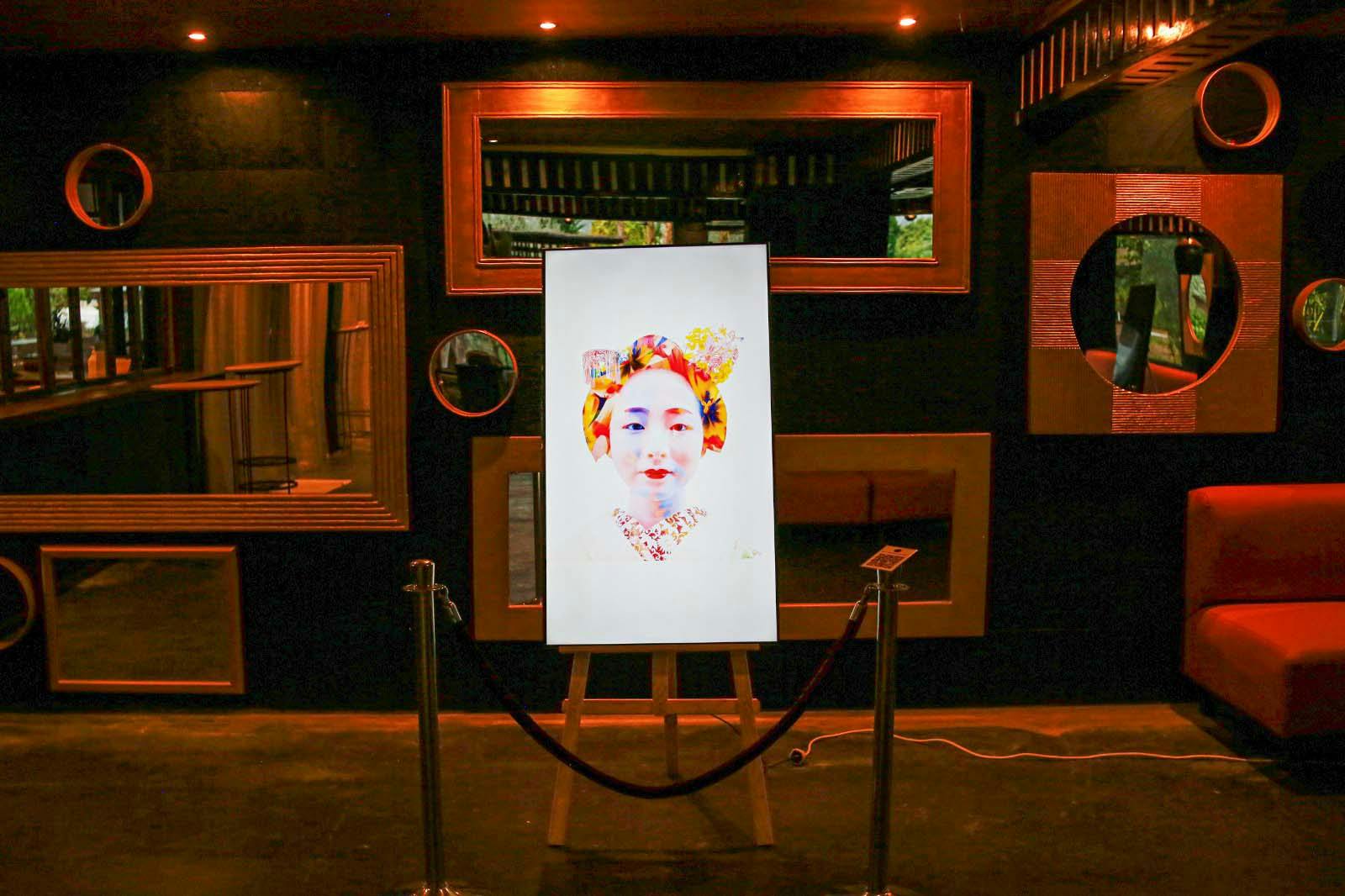Jordi Gómez: "What I like about NFT’s is that it is a support in which there are no limits"
The photographer based in Ibiza considers that the Non Fungible Token’s are the future and a bridge between physical and digital art
Jordi Gómez describes himself as a storyteller who has been in the photography sector for more than 20 years. Born in Caldes de Montbui (Barcelona), in 1978, at the age of 22 he decided to change his residence and move to Ibiza, where after a year he was already working as head of photography at the magazine of Pacha. Innovative, avant-garde, and lover of the audiovisual world, he has long since begun to explore the world of NFT’s, which he describes as a "bridge between physical and digital art". "I think NFTs are the future and we have to take positions," he says.
Scroll down to the bottom to read the spanish version
Deslízate hasta abajo para leer la versión en castellano
Since he arrived in Ibiza and found work as a photographer for the magazine Pacha his career has not stopped growing and there are few people who have not come across some of his photographs in different hotels on the island, billboards or even on labels of select bottles of wine. Who is behind those images?
I consider myself a storyteller, a photographer who has been in the world of photography for more than 20 years and loves his work.
What attracted you to photography?
I was born in Barcelona and from a very young age, I wanted to know the world and travel. At the age of 20, I went to London and after a year and a half of studying English, I decided to take a seven-month trip from London to Los Angeles through India, Thailand, Laos, Vietnam, Australia... In the end, I stayed two years, it was wonderful. That's how my romance with photography began and the possibilities it offers you to observe and capture the beauty of the contrasts of the planet. I traveled alone and took refuge in my camera as a mode of expression.
What brought you to the island of Ibiza?
After this trip, I returned to Barcelona and began to train in art schools. I started that journey without knowing how to use a camera and I returned with a portfolio full of images from almost five continents and with very powerful material, so many doors were opened to me. I started working in audiovisual montages in clubs and parties and as a photographer at night clubs and I thought that, at that time, Ibiza would be a perfect place to look for life. I arrived on the island in 2000 and started knocking on all the doors to offer my services, one of them Pachá, who were looking for photographers for the first issue of their magazine. I had to pass three interviews to work with them. I started as the third and fourth photographer on the team and a year later I was appointed head of photography at the magazine.
A project that changed your life...
Yes, as the project grew I grew with him and for ten years the magazine Pachá became the Bible of lifestyle in Ibiza: lifestyle, fashion, art, celebrities, nature, hippie world ... He helped me forge a name for myself on the island, train me and show the world what I was capable of. Through this project, I was able to immerse myself in the professional world of photography and create a very powerful network of contacts. It was my cover letter and I am very proud to have been part of that project.
 Jordi Gómez, behind the lens.
Jordi Gómez, behind the lens.
Why did you stop working at the magazine?
It was in 2011. Until then he worked exclusively for the group because he was the photographer of the brand. I decided to set up an audiovisual production company to work with different clients and start diversifying. Make advertising campaigns, fashion... I also started working with different galleries to make exhibitions of my photographs and with art dealers in Holland and Germany. I exhibited in Paris and in different parts of the world... The production company served as a platform for me to work with a team and continue creating my world. At present, we continue with many products at a commercial level. There is a very powerful human team behind it.
Tell us about your latest projects.
I currently have a wine business. Six years ago I created the concept of 'Art meets Wine' because I thought the bottle of wine would be the perfect vehicle for my photographs. I buy the wine in Rioja and I do the packaging, I have seven qualities of wine and we change the labels every two or three years. It's called Sexycologic.
The production company served as a platform for me to work with a team and continue creating my world
Where can we find Sexycologic?
It was the wine of the Pacha group for the first 4 years, it was the wine of the house of Lío, Pacha, Destino... Then we also sold it in Cala Bassa, Sa Punta, STK... These two years have been more complicated because the whole issue of covid has slowed down the issue of sales, although we had a contract to move them in Germany and South Korea that has slowed down. Now I am also developing a canned wine with my images and decoration projects in new spaces. My work has many tentacles: photography applied to advertising, decoration, wine bottles, tables, t-shirts... And I've been in the NFT world for a while now.
How did your first NFT (Non Fungible Token) project come about?
I am a restless person who is always attentive to how the market is evolving. I've been in the world of cryptocurrency for a long time and as a visual artist, you are seeing the trend a bit.
What caught your attention about this digital art?
What caught my attention the most is that I consider it a bridge between physical and digital art. Today we live more than ever in a world that is taking more and more steps towards the Metaverse so I think it is necessary to be there, to have a presence in that Universe. Even if you also continue to work in the physical world.
What are the advantages of NFTs?
The NFT offers the possibility of having your images, your art, in another dimension, in other portals where collectors are also there. It is an evolution of art. During the pandemic, I was studying all these platforms and portals a little bit and trying to understand the concept a little bit... It's a very interesting world because it allows you to show your work to the world in a different way.

Before Ibiza Token contacted you, you already had a collection of NFT...
Yes, I had already created some. I had the foundation, but talking to the team behind this project is helping me to understand many more aspects. I thought it was very accurate what one of the experts who attended the blockchain conference in Atzaró (Ibiza NXT) commented, who said that in this world there is nothing written. "Everything evolved so fast that what today is a hit tomorrow ceases to be so because there is something else." We can see an example of this in the NFT of punkys and gorillas, which are images from another time that have hit the market in a brutal way. That's why you have to be there, in the market.
What do you think of these new art collectors?
In these times great fortunes are being amassed with cryptocurrency. Today many people and many collectors have this virtual money and when they see something that interests them they buy it and revalue the work. You have to be very informed and aware of how the market evolves because otherwise, we would be missing a fantastic opportunity to reach another world and other collectors.
There are people who do not consider digital works of art...
We live in a world so virtual that, sometimes, you don't quite understand it... I see NFTs as a bridge between the physical and the digital. I loved, for example, the presentation of my work in Atzaró. Seeing my geisha on a screen and with movement... I feel like we're changing the rules of the game. You no longer print on methacrylate or aluminum, for example, now the format is different, television screens. I see it as a natural evolution. The truth is that I liked it a lot.
Do you see yourself working more and more on this support?
Yes. Maybe in the future, instead of spending the money on hundreds of prints, I could make an investment in support, 10 or 15 screens, and exhibit my art in this format. It is still a physical format, although it is digital. When you do an expo there are significant expenses in terms of prints, materials, etc. Why not use this new digital support on a screen? It allows you to change the work also whenever you want.
Do you think it benefits artists?
I think it is a very interesting world that gives an escape route to artists to get out of the circuit of galleries and art dealers. In this way, you are your own art dealer and you are able to reach many more places through these digital platforms where you expose your NFT.
I see NFTs as a bridge between the physical and the digital
Did you have any difficulty developing your NFTs?
I was chatting with the creative team of Ibiza Token about what image we could use and the geisha theme seemed very global, sensitive, and fresh. We thought it could reach many people, so we decided to make it the first. It is true that I am now seeing more possibilities for creation. I'm giving a twist to my work to do animation. That geisha had no animation, it was a static image and we are thinking about the possibilities that exist for him to put a smile or wink. That kind of concept you can not carry out in a print, but in digital format, you can play with all those details and give it another spin. What I like about NFTs is that there are no limitations. Ibiza Token is a platform that combines art and local commerce, do you think that the businesses of the island are prepared to also make the leap to the digital platform?
I think it's going to take time for some. Even I, who am always looking at new trends, had a hard time understanding them. People who are not very up-to-date on new technologies are going to cost a lot more. Sometimes I miss so much knowledge about the virtual world. Imagine someone from another generation, who has not lived it so closely. I think it may take time, I think people are interested, but they are suspicious because they don't quite understand it. But I think it is the future and we have to take positions. The one who first comes to understand it will be able to share it and take advantage of it. Everything evolves in this digital world so it is important to understand and understand it to get the most project for your business or your art.


Jordi Gómez: “Lo que me gusta de los NFT es que es un soporte en el que no hay límites”
El fotógrafo afincado en Ibiza considera que los Non Fungible Token son el futuro y un puente entre el arte físico y el digital
Jordi Gómez se describe como un contador de historias que lleva más de 20 años en el sector de la fotografía. Nacido en Caldes de Montbui (Barcelona), en 1978, a los 22 años decidió cambiar su residencia y mudarse a Ibiza, donde al cabo de un año ya estaba trabajando de jefe de fotografía en la revista de Pachá. Innovador, vanguardista y amante del mundo audiovisual hace tiempo que comenzó a explorar el mundo de los NFT, que califica como un “puente entre el arte físico y el digital”. “Creo que los NFT son el futuro y hay que ir cogiendo posiciones”, destaca.
Desde que llegó a Ibiza y encontró trabajo como fotógrafo de la revista Pachá su carrera no ha dejado de crecer y son pocas las personas que no se han topado con alguna de sus fotografías en diferentes hoteles de la isla, vallas publicitarias o incluso en etiquetas de selectas botellas de vino. ¿Quién hay detrás de esas imágenes?
Me considero un contador de historias, un fotógrafo que lleva más de 20 años en el mundo de la fotografía al que le encanta su trabajo.
¿Qué le atrajo de la fotografía?
Nací en Barcelona y desde muy joven quise conocer mundo y viajar. A los 20 años me fui a Londres y después de un año y medio estudiando inglés decidí hacerme un viaje de siete meses de Londres a Los Ángeles pasando por India, Tailandia, Laos, Vietnam, Australia... Al final estuve dos años, fue una maravilla. Así fue como empezó mi romance con la fotografía y de las posibilidades que te ofrece para observar y captar la belleza de los contrastes del planeta. Viajé solo y me refugié en mi cámara como un modo de expresión.
¿Cómo llegó a Ibiza?
Después de este viaje volví a Barcelona y me empecé a formar en escuelas de arte. Comencé aquel viaje sin saber usar una cámara y volví con un portfolio repleto de imágenes de casi cinco continentes y con un material muy potente, por lo que se me abrieron muchas puertas. Empecé a trabajar en montajes audiovisuales en clubs y fiestas y como fotógrafo en night clubs y pensé que, en ese momento, Ibiza sería un lugar perfecto para buscarme la vida. Llegué a la isla en 2000 y empecé a llamar a todos las puertas para ofrecer mis servicios, una de ellas Pachá, que estaban buscando fotógrafos para el primer número de su revista. Tuve que pasar tres entrevistas para trabajar con ellos. Empecé como tercero y cuarto fotógrafo del equipo y un año después me nombraron jefe de fotografía de la revista.
 Gómez posa para Paris Hilton.
Gómez posa para Paris Hilton.
Un proyecto que cambió su vida...
Sí, a medida que crecía el proyecto yo crecía con él y durante diez años la revista Pachá se convirtió en la Biblia del lifestyle en Ibiza: estilo de vida, moda, arte, celebrities, naturaleza, mundo hippie... Me ayudó a forjarme un nombre en la isla, a formarme y a mostrar al mundo de la que era capaz. A través de este proyecto pude meterme de lleno en el mundo profesional de la fotografía y crear una red de contactos muy potente. Fue mi carta de presentación y estoy muy orgulloso de haber formado parte de ese proyecto.
¿Por qué dejó de trabajar en la revista?
Fue en 2011. Hasta entonces trabajaba en exclusiva para el grupo porque era el fotógrafo de la marca. Decidí montar una productora de audiovisual para trabajar con diferentes clientes y empezar a diversificar. Hacer campañas de publicidad, moda... También comencé a trabajar con diferentes galerías para hacer exposiciones de mis fotografías y con marchantes de arte en Holanda y Alemania. Expuse en París y en diferentes lugares del mundo... La productora me sirvió de plataforma para trabajar con un equipo y poder seguir creando mi mundo. En la actualidad seguimos con muchos productos a nivel comercial. Hay un equipo humano muy potente detrás.
Háblenos de sus últimos proyectos.
Actualmente tengo un negocio de vinos. Hace seis años cree el concepto de ‘Art meets Wine’ porque pensé que la botella de vino sería el perfecto vehículo para mis fotografías. Compro el vino en Rioja y hago el packaging, tengo siete calidades de vino y vamos cambiando las etiquetas cada dos o tres años. Se llama Sexycologic.
La resvista Pachá me ayudó a forjarme un nombre en la isla, a formarme y a mostrar al mundo de la que era capaz.
¿Dónde podemos encontrar Sexycologic?
Fue el vino del grupo Pacha durante los primeros 4 años, era el vino de la casa de Lío, Pacha, Destino... Luego lo vendimos también en Cala Bassa, Sa Punta, STK... Estos dos años han sido más complicados porque todo el tema del covid ha ralentizado el tema de ventas, aunque teníamos un contrato para moverlos en Alemania y Corea del Sur que se ha frenado. Ahora estoy desarrollando también un vino en lata con mis imágenes y proyectos de decoración en nuevos espacios. Mi trabajo tiene muchos tentáculos: fotografía aplicada a publicidad, decoración, botellas de vino, mesas, camisetas... Y hace un tiempo que estoy en el mundo de los NFT.
¿Cómo surge su primer proyecto de NFT (Non Fungible Token)? Soy una persona inquieta que siempre está atenta a cómo va evolucionando el mercado. Hace tiempo que estoy en el mundo de la criptomoneda y como artista visual vas viendo un poco la tendencia.
¿Qué le llamó la atención de este arte digital? Lo que más captó mi atención es que lo considero un puente entre el arte físico y el digital. Hoy en día vivimos más que nunca en un mundo que cada vez da más pasos hacia el Metaverso por lo que creo que es necesario estar ahí, tener presencia en ese Universo. Aunque continúes también trabajando en el mundo físico, claro.
¿Cuáles diría que son sus ventajas?
El NFT ofrece la posibilidad de tener tus imágenes, tu arte, en otra dimensión, en otros portales donde los coleccionistas también están. Es una evolución del arte. Durante la pandemia estuve estudiando un poco todas estas plataformas y portales y tratando de entender un poco el concepto... Es un mundo muy interesante porque te permite mostrar tu trabajo al mundo de una manera diferente.
 Exposición de NFT en Agroturismo Atzaró, 'la Geisha'.
Exposición de NFT en Agroturismo Atzaró, 'la Geisha'.
Antes de que Ibiza Token se pusiera en contacto con usted ya tenía una colección de NFT...
Sí, ya había creado algunos. Tenía la base, pero hablar con el equipo que hay detrás de este proyecto me está sirviendo para entender muchos más aspectos. Me pareció muy acertado lo que comentó uno de los expertos que acudieron a la conferencia de blockchain de Atzaró (Ibiza NXT), que dijo que en este mundo no hay nada escrito. “Todo evoluciono tan rápido que lo que hoy es un hit mañana deja de serlo porque hay otra cosa”. Podemos ver un ejemplo de esto en los NFT de los punkys y los gorilas, que son imágenes como de otro tiempo que han golpeado el mercado de una manera brutal. Por eso hay que estar ahí, en el mercado.
¿Qué opina de estos nuevos coleccionistas de arte? En estos tiempos se están amasando grandes fortunas con la criptomoneda. Hoy mucha gente y muchos coleccionistas que tienen este dinero virtual y cuando ven algo que les interesa lo compran y revalorizan la obra. Hay que estar muy informado y pendiente de cómo evoluciona el mercado porque si no estaríamos perdiendo una oportunidad fantástica de llegar a otro mundo y a otros coleccionistas.
Hay gente que no considera arte a las obras digitales... Vivimos en un mundo tan virtual que, a veces, no lo acabas de entender...Yo veo los NFT como un puente entre lo físico y lo digital. Me encantó, por ejemplo, la presentación de mi obra en Atzaró. Ver mi geisha en una pantalla y con movimiento... Siento que estamos cambiando las reglas del juego. Ya no imprimes en metacrilato o en aluminio, por ejemplo, ahora el formato es diferente, pantallas de televisión. Lo veo una evolución natural. La verdad es que me gustó mucho.
¿Se ve trabajando cada vez más en este soporte? Sí. A lo mejor en un futuro, en vez de gastarme el dinero en cientos de impresiones, podría hacer una inversión en soporte, 10 o 15 pantallas, y exponer mi arte en este formato. Sigue siendo un formato físico, aunque es digital. Cuando haces una expo hay unos gastos importantes en cuanto a impresiones, materiales, etc. ¿Por qué no utilizar este nuevo soporte digital en una pantalla? Te permite cambiar la obra también siempre que quieras.
¿Cree que beneficia a los artistas? Me parece un mundo muy interesante que le da una vía de escape a artistas para salir un poco del circuito de las galerías y los marchantes de arte. De esta forma tú eres tu propio marchante de arte y eres capaz de llegar a muchos más sitios a través de estas plataformas digitales donde expones tus NFT.
Yo veo los NFT como un puente entre lo físico y lo digital
¿Tuvo alguna dificultad a la hora de desarrollar sus NFT? Estuve charlando con el equipo creativo de Ibiza Token sobre qué imagen podíamos utilizar y el tema de la geisha nos pareció muy global, sensible y fresco y pensamos que podía llegar a mucha gente, por eso decidimos que fuera el primero. Es verdad que ahora estoy viendo más posibilidades de creación. Estoy dándole una vuelta de tuerca a mi trabajo para hacer animación. Esa geisha no tenía animación, era una imagen estática y estamos pensando las posibilidades que existen para que ponga una sonrisa o guiñe un ojo. Ese tipo de concepto no lo puedes llevar a cabo en una impresión, pero en formato digital puedes jugar con todos esos detalles y darle otra vuelta más. Lo que me gusta de los NFT es que no hay limitaciones.
¿Cree que los negocios de la isla están preparados para dar también el salto al mundo blockchain?
Creo que va a llevar su tiempo para algunos. Incluso a mí, que siempre estoy mirando las nuevas tendencias, me costó entenderlo. A la gente que no está muy actualizada en nuevas tecnologías le va a costar mucho más. A veces se me escapa tanto mundo virtual. Imagínate a alguien de otra generación, que no lo ha vivido tan de cerca. Yo creo que puede tardar, creo que a la gente le interesa, pero es recelosa porque no lo acaba de entender. Pero creo que es el futuro y hay que ir cogiendo posiciones. El que primero llegue a entenderlo será capaza de compartirlo y sacar partido de ello. Todo evoluciona hacia este mundo digital así que es importante entender y comprenderlo para sacarle el mayor proyecto a tu negocio o a tu arte.

